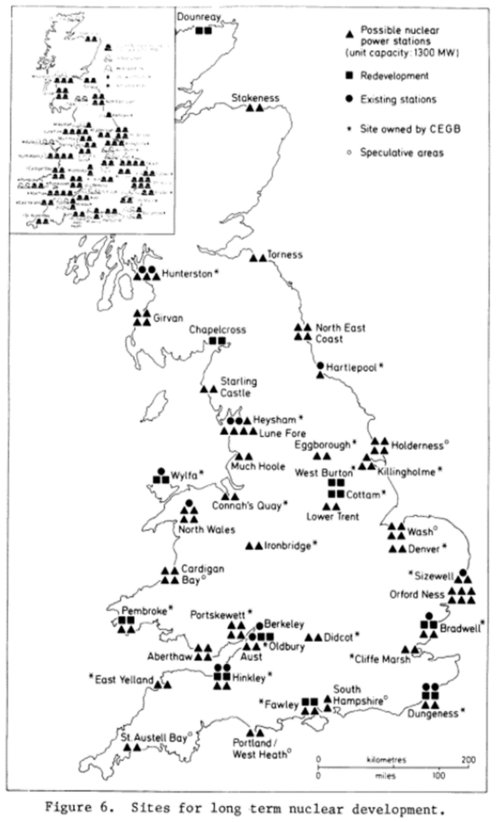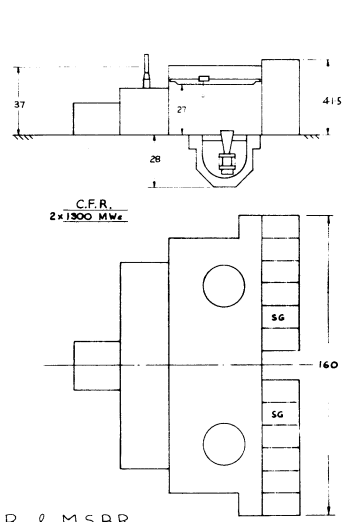NOMISYRRUC
ACCESS: Top Secret
- Joined
- 28 September 2008
- Messages
- 2,366
- Reaction score
- 3,827
Do you want your children to glow in the dark? Then move to Windscale.
View: https://www.youtube.com/watch?v=Yt1Jd4stPFQ
They're British.Do you want your children to glow in the dark? Then move to Windscale.
View: https://www.youtube.com/watch?v=Yt1Jd4stPFQ
A little more information from Earth Science Conservation No.25 in 1988 on the 900 MWe plant. In 1986, eight were projected to be built:In fact, there were a couple of generations of it. A standard 500 MWe turbine-generator set went into 10 coal and 4 oil fired plants ordered from 1961 onwards. From 1967, an enlarged 660 MWe set went into one coal, two oil, and the AGR plants. There seems to have been some talk of a 900 MWe supercritical unit in the 1980s, but that never came to fruition.
Found the map - it's not from New Scientist at all, but from the 1985 book Geographical Dimensions of Energy:There was also a map in New Scientist at some point in the 1970s or early 1980s showing sites identified for potential future reactors. There were... a lot.

Agreed.It's a shame that CNH isn't still around.
An interesting watch, but a bit hard going due to the narrator's delivery. At the start I honestly wasn't sure if it was human or robot generated.
That's the Commercial Fast Reactor, which was always ten years away.I read an article that said in the 60s Britain expected to build a number of commercial fast breeder reactors, presumably alongside AGRs. The prototype fast reactor was sort of like the other 4 prototypes, a small proof of concept that was connected to the grid.

I haven't seen that specific YouTube documentary, but it's possible that the information you provided is accurate. The Advanced Gas-cooled Reactor (AGR) program in the UK did face some challenges during its development, including financial difficulties and technical issues.
